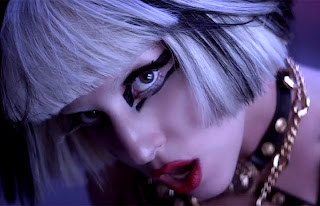1900s - silent movie era
Soundtracks were mostly simple piano music created especially for the film.
The Great Train Robbery (1903)
1915 - scores from existing music started being used in films
1930s-50s - movie musicals
Warner Brothers' film 'The Jazz Singer' released in 1927 was the first musical movie, featuring Al Jolson singing songs such as "My Mammy".
Al Jolson - 'My Mammy' from 'The Jazz Singer', 1927
The movie musical craze continued through the 50s, with other successful releases including 'Singin' in the Rain', which featured Gene Kelly performing the 1929 hit of the same name.
Gene Kelly - 'Singin' in the Rain' from 'Singin' in the Rain', 1952
60s - modern-style movie soundtracks
Many songs that are now classics were featured in films, such as many Simon and Garfunkel songs from the 1967 film 'The Graduate', including 'Mrs. Robinson' and 'The Sound of Silence'. The film raised the duo's profile considerably, showing how films can benefit music artists. It also raised their prestige as Simon received a Grammy for 'Best Original Score Written for a Motion Picture of Television Special'
The songs featured in films were very popular, and soundtrack sales boomed. The soundtrack for 'The Graduate' rose to No. 1 instantly. The soundtrack for the 1961 musical film 'West Side Story' stayed at #1 on the album charts for 54 weeks, giving it the longest run of any album.
(source: http://en.wikipedia.org/wiki/West_Side_Story_(soundtrack))
(source: http://en.wikipedia.org/wiki/West_Side_Story_(soundtrack))
Some films were also based around music, rather than just containing music appropriate to the film. In 1968 the animated musical film 'Yellow Submarine' was released, and was based on the music of The Beatles.
70s - start of big money soundtracks
The songs which were in the charts for the longest time started to be determined by whether they were featured in films. Of the 8 singles that have remained at the top of the UK charts for 10 or more weeks, over half have been featured in films. For example, the Wet Wet Wet version of 'Love Is All Around' was featured in the 1994 film 'Four Weddings and a Funeral', and stayed at No.1 for 15 weeks.Films also harnessed their power to revive old hits, such as the 1992 film 'Wayne's World', which brought Queen's 'Bohemian Rhapsody' back into the charts.
During this time soul or rock 'n' roll soundtracks started to be the most popular choice, such as in the 1986 film 'Stand By Me', although some films such as 'Jaws' continued to create a demand for big orchestral musical scores.

+%5Bkampac%E2%84%A2%5D.VOB_snapshot_02.34_%5B2010.05.01_03.37.00%5D.jpg)

+%5Bkampac%E2%84%A2%5D.VOB_snapshot_02.34_%5B2010.05.01_03.37.00%5D.jpg)

